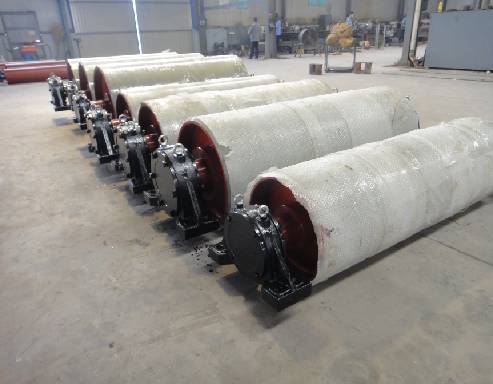 Afrikaans
Afrikaans  Albanian
Albanian  Amharic
Amharic  Arabic
Arabic  Armenian
Armenian  Azerbaijani
Azerbaijani  Basque
Basque  Belarusian
Belarusian  Bengali
Bengali  Bosnian
Bosnian  Bulgarian
Bulgarian  Catalan
Catalan  Cebuano
Cebuano  Corsican
Corsican  Croatian
Croatian  Czech
Czech  Danish
Danish  Dutch
Dutch  English
English  Esperanto
Esperanto  Estonian
Estonian  Finnish
Finnish  French
French  Frisian
Frisian  Galician
Galician  Georgian
Georgian  German
German  Greek
Greek  Gujarati
Gujarati  Haitian Creole
Haitian Creole  hausa
hausa  hawaiian
hawaiian  Hebrew
Hebrew  Hindi
Hindi  Miao
Miao  Hungarian
Hungarian  Icelandic
Icelandic  igbo
igbo  Indonesian
Indonesian  irish
irish  Italian
Italian  Japanese
Japanese  Javanese
Javanese  Kannada
Kannada  kazakh
kazakh  Khmer
Khmer  Rwandese
Rwandese  Korean
Korean  Kurdish
Kurdish  Kyrgyz
Kyrgyz  Lao
Lao  Latin
Latin  Latvian
Latvian  Lithuanian
Lithuanian  Luxembourgish
Luxembourgish  Macedonian
Macedonian  Malgashi
Malgashi  Malay
Malay  Malayalam
Malayalam  Maltese
Maltese  Maori
Maori  Marathi
Marathi  Mongolian
Mongolian  Myanmar
Myanmar  Nepali
Nepali  Norwegian
Norwegian  Norwegian
Norwegian  Occitan
Occitan  Pashto
Pashto  Persian
Persian  Polish
Polish  Portuguese
Portuguese  Punjabi
Punjabi  Romanian
Romanian  Russian
Russian  Samoan
Samoan  Scottish Gaelic
Scottish Gaelic  Serbian
Serbian  Sesotho
Sesotho  Shona
Shona  Sindhi
Sindhi  Sinhala
Sinhala  Slovak
Slovak  Slovenian
Slovenian  Somali
Somali  Spanish
Spanish  Sundanese
Sundanese  Swahili
Swahili  Swedish
Swedish  Tagalog
Tagalog  Tajik
Tajik  Tamil
Tamil  Tatar
Tatar  Telugu
Telugu  Thai
Thai  Turkish
Turkish  Turkmen
Turkmen  Ukrainian
Ukrainian  Urdu
Urdu  Uighur
Uighur  Uzbek
Uzbek  Vietnamese
Vietnamese  Welsh
Welsh  Bantu
Bantu  Yiddish
Yiddish  Yoruba
Yoruba  Zulu
Zulu Exploring the Function and Importance of Conveyor Idler Pulleys in Material Handling Systems
The Importance of Conveyor Idler Pulleys in Material Handling Systems
Conveyor systems are integral to modern industrial operations, allowing for the efficient movement of materials across various points within a facility. Central to the function of these systems are conveyor idler pulleys, components that play a vital role in supporting and guiding the conveyor belt as it moves. Understanding the importance of idler pulleys can enhance the efficiency and longevity of conveyor systems, ultimately leading to improved productivity and reduced operational costs.
What Are Conveyor Idler Pulleys?
Conveyor idler pulleys are non-driven rollers that support the weight of the conveyor belt and its load. Positioned throughout the conveyor line, they help maintain proper tension and alignment of the belt. Typically made from materials such as steel or aluminum, idler pulleys are designed to withstand the harsh conditions of industrial environments, including exposure to heavy loads, abrasive materials, and varying temperatures.
Functions of Idler Pulleys
1. Support and Stability Idler pulleys provide essential support for the conveyor belt. By distributing the weight of the material being transported, they prevent sagging and help maintain a consistent belt path. This stability is crucial for preventing misalignment and potential operational failures.
2. Tension Management Proper tension in the conveyor belt is vital for efficient operation. Idler pulleys assist in maintaining this tension, which prevents slippage and reduces wear on both the belt and the drive mechanisms. By ensuring optimum tension, idler pulleys help extend the lifespan of the conveyor system.
3. Reduced Friction Quality idler pulleys are designed to minimize friction between the belt and the rollers. Lower friction translates to less energy consumption, enhancing the overall efficiency of the conveyor system. Reduced friction also leads to less heat generation, which can improve the longevity of both the belt and the pulleys.
4. Facilitation of Material Flow The smooth operation facilitated by idler pulleys ensures that materials move efficiently along the conveyor system. This uninterrupted flow is critical for operations that rely on just-in-time delivery, where delays can lead to significant operational bottlenecks and financial losses.
conveyor idler pulley

Types of Idler Pulleys
There are various types of conveyor idler pulleys, each designed for specific applications and environments
. Common types include- Impact Idlers Designed to absorb shock and protect the belt from heavy loads during loading operations. - Return Idlers Positioned on the return side of the conveyor belt, these pulleys support the belt as it returns to the loading area. - Training Idlers Used to maintain the alignment of the belt, preventing it from drifting off track.
The choice of the right idler pulley depends on factors such as the nature of the materials being transported, the operational environment, and the specific requirements of the conveyor system.
Maintenance and Best Practices
To ensure the optimal performance of conveyor idler pulleys, regular maintenance is essential. This includes inspecting for signs of wear, ensuring proper lubrication, and checking for misalignment. Monitoring these components can prevent downtime caused by unexpected failures.
When selecting idler pulleys, it is crucial to consider not only their material and design but also their compatibility with the specific conveyor system in use. Investing in high-quality idler pulleys can lead to enhanced efficiency and reduced maintenance costs over time.
Conclusion
In conclusion, conveyor idler pulleys are a fundamental component of material handling systems. Their role in supporting, guiding, and maintaining the tension of the conveyor belt is critical to the efficient operation of industrial processes. By understanding their importance and implementing best practices for maintenance, businesses can enhance productivity and reduce the total cost of ownership for their conveyor systems. As industries continue to evolve, the significance of innovative and reliable components like idler pulleys will remain ever-present in the pursuit of operational excellence.
-
Revolutionizing Conveyor Reliability with Advanced Rubber Lagging PulleysNewsJul.22,2025
-
Powering Precision and Durability with Expert Manufacturers of Conveyor ComponentsNewsJul.22,2025
-
Optimizing Conveyor Systems with Advanced Conveyor AccessoriesNewsJul.22,2025
-
Maximize Conveyor Efficiency with Quality Conveyor Idler PulleysNewsJul.22,2025
-
Future-Proof Your Conveyor System with High-Performance Polyurethane RollerNewsJul.22,2025
-
Driving Efficiency Forward with Quality Idlers and RollersNewsJul.22,2025





























